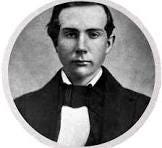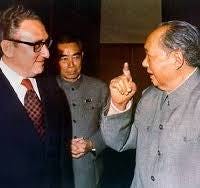The ‘good old days’? No!
Some people criticize the current terrible, unjust state of affairs in the United States (and similarly elsewhere) by saying, “This isn’t how capitalism is supposed to be.” They talk about a “good” capitalism, what I call “Mom and Pop Capitalism” that I wrote about here, and they complain that what we have today is a far cry from what capitalism is supposed to be.
There is Nothing that Capitalism is Supposed to Be
The problem is there is nothing that capitalism is “supposed to be.” Capitalism was never invented or designed by anybody with a particular goal or intention. Capitalism developed as a result of millennia of human activity, activity carried out by humans will all sorts of varied and often mutually contradictory aims.
So let’s drop the “supposed to be” way of thinking about capitalism. Instead let’s acknowledge that the version of capitalism that existed in the United State two hundred or one hundred years ago, however much one may wish (wrongly, in my view) to idealize it, developed into what we have today (call it capitalism or not, I don’t care). And let’s be clear about WHY it developed that way. It did so as a result of the kind of individuals that its unchallenged principles allowed to become wealthy and powerful. What kind of principles? Principles such as production for profit, buying and selling things, wage labor, private ownership by a few haves of the means of production, etc.). What kind of individuals? People such as the initially young and poor but clever and greedy John D. Rockefeller the First.
The young and initially poor John D. Rockefeller I, born 1839
And let’s be clear about what that so-called “good capitalism” gave birth to. It’s what we have today, of course: obscene economic and political inequality. It’s inequality with a ruling billionaire plutocracy that straddles the world with multi-national essentially sovereign corporations. It’s a ruling class that engages in warmongering against invented bogeyman enemies and commits mass murder to control and dominate the have-nots of the world. It’s a ruling class that glorifies the idea of free-market capitalism as the best and only sensible way for an economy to be. At the same time it employs the likes of Henry Kissinger to create a symbiotic relationship with “socialist” style capitalist national rulers in places such as China to exploit and oppress cheap labor there.
Restoring “Good Capitalism” Is an Absurd Goal
To argue that the solution to the terribleness of today’s society is to restore “good capitalism” is absurd. So-called “good capitalism” is what leads (and did lead, obviously) to today’s horrible call-it-what-you-will. I call it class inequality.
Class inequality is characterized by a small class of haves a) securing for itself great power (typically great wealth) and privilege at the expense of the have-nots, and b) treating the have-nots like dirt in order to prevent them from making a more equal and just world.
The Sensible Goal is to Abolish Class Inequality, Not Go Back to “Good Capitalism”
The only sensible way to end the terribleness of class inequality is to abolish class inequality. To do this requires first making it our explicit (read why explicit here) goal to do exactly that—to abolish class inequality. Then we need to think about what kind of non-class-inequality society is both desirable and realistically achievable and practical. I think egalitarianism, as discussed here (about egalitarianism overall) and here (about an egalitarian sharing economy) and here (about egalitarian genuine democracy), points the way.
Then we can talk to people about this. We can talk to virtually everybody who’s not rich (and even maybe a few rich people), people like my five-hundred neighbors in these individual photos, each displaying a sign (zoom in to read it) saying they want to remove the rich from power to have real, not fake, democracy with no rich and no poor, i.e., an egalitarian revolution. We can talk to them not only about exceptionally shocking and typically secret horrible things going on in our society, but also about what is fundamentally wrong with it.
We can talk to people about how the fundamental wrongness of our society is that we the have-nots are treated like dirt ROUTINELY, daily, in ways that are considered normal and unremarkable. Like this, for example:
We can talk about how we’re treated like dirt because we’re living in a class-inequality society instead of in the kind of society we OUGHT to be living in: an egalitarian society. We can talk about the need to remove the rich from power to make our society egalitarian with no rich and no poor and with real, not fake, democracy. And we can be PERSUASIVE about this because we have thought a lot about what an egalitarian society actually can be, about how—concretely—it can be both much better and practical.
When we talk to people about all of this we will be essentially telling people, “You are right! As you already know, we need to remove the rich from power to have real, not fake, democracy with no rich and no poor. And furthermore, as you may not yet know, you are part of the vast majority in feeling this way.” This is how we can build an explicitly egalitarian revolutionary movement with an inspiring vision of what it aims for, a movement whose strength derives from confidence and hope, not suffering and despair. One way to begin building such a movement is described here.










You have to ascertain whether or not people's consent to your proposals is superficial, due to your highly respectable, friendly, persuasive, articulate, and well educated middle class presence, or something they believe so deeply that propaganda to the contrary will not shake them.